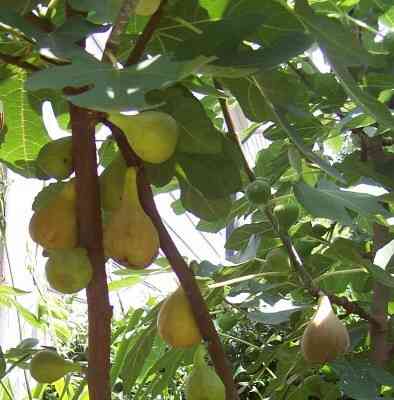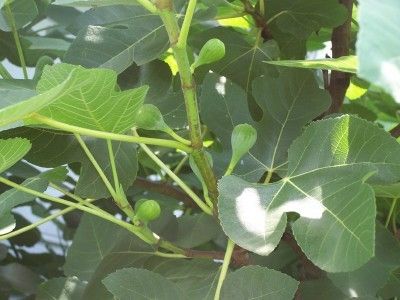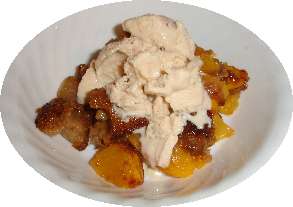
Fig U-Pick Orchards or farms in Washington in 2025, by area of state
Keep in mind, not all areas of a state have figs orchards that are open to the public. If you know of any others, please tell us using the add a farm form!
These are the areas of the state that have fig orchards to pick figs. Click on the area closet you!
Fig
Fig Picking Tips, Recipes and Information
In the U.S., Figs typically peak from July through first frost in the South, and from August and later in the North. Usually the trees produce a crop within a month, and then nothing for several months, so check your local farm to find out when they will be in season. In the north, most trees only produce one crop per season. In order to produce good local Figs, producers depend on ideal spring and early summer weather conditions, and no late frosts.
Fig Varieties.
There are hundreds of fig varieties but the following are most commonly found in U.S. farms and markets.
Brown Turkey Figs: has brownish / copper-colored skin, often with hints of purple, and mostly pink/red flesh with some white flesh. This variety is used exclusively for the fresh fig market and is common at PYO farms..
Celeste figs are about the size of an egg, a purplish-brown when ripe, and a dark, sweet, moist, purple flesh inside.
The Calimyrna Fig: Is known for its nut-like flavor and golden skin. This type is commonly eaten as is.
The Mission Fig: Was named for the mission fathers who planted the
fruit along the California coast. This fig is a deep purple which darkens to a
rich black when dried. Often called "black mission figs".
The Kadota Fig: Is the American version of the original Italian Dattato fig, that is thick-skinned with a creamy amber color when ripe. Practically seedless, this fig is often canned and dried. A similar variety is the "Peter's Honey" fig. Birds often leave these alone, because, since they are green when ripe, the birds don't know they're ripe!
How to know when a fig is ripe
Color - Figs come in all colors from yellow, brown, red to purple, black and others! So you need to know what color the ripe fig is. The most commonly grown figs, Brown Turkey and Celeste are a golden yellow as shown at left when ripe.
Texture - Ripe Figs Become soft like a peach when ripe, but they should not be mushy or fall apart!
Fig Picking Tips
 |
Figs grown on low, open trees, with no thorns and soft leaves, so they're very easy to pick! The ripe figs will separate easily from the tree when you lift them upwards from their normal drooping position. The ripe figs definitely droop a bit and feel softer. Unripe figs are harder, more firmly attached and do not droop. Note the orange, drooping Celeste figs at left. |
 |
Figs must be picked ripe from the trees, since they do not ripen once picked. See the photo of unripe figs at left. They are small, hard, and not their proper color. Of course, there are some figs, like LSU Gold, Peter's Honey, or Italian figs that are greenish-yellow when ripe, too. |
Fig sap allergy?
I have heard and verified that some people are allergic to the fig latex, a milky white liquid produced by the fig tree and develop contact rashes. Just like with other latex allergies, if this applies to you be sure to wear and long sleeves when you pick and wear the appropriate type of gloves when picking or handling figs!
Storing fresh figs
Figs won't last long at room temperature, but a mildly cool refrigerator will keep them several days.
Freezing Figs
Freeze within 12 hours of picking time, if possible. Prepare and freeze Figs only about 3 pints at one time. Then repeat the process until all Figs are frozen.
- Make a medium sweetness syrup of
3 cups sugar
4 cups water
The figs will taste slightly sweeter than desired at this stage to be the proper flavor after freezing. Simply stir the sugar into the water to dissolve. No heating is necessary. - To the sugar syrup, add an citric/ascorbic add mixture bought at the grocery store (for example, "Fruit Fresh") and follow the directions on the package, generally adding about 1 teaspoon per batch. This is to help preserve color and flavor.
- Wash the figs. remove the stems and any soft spots. Slice the figs about 1/4-inch (1/2 cm) thick.
- Pack the sliced figs into polyethylene containers, ziploc bags, or vacuum freezer bags, allowing room to add about 1/2 cup of sugar syrup, and allowing about 1/2 inch per pint expansion room. More room will be needed for larger containers. Pack the containers to force out as much air as possible since air dries out the figs when they freeze. Be sure to label and date containers.
- Place containers as quickly as possible into the coldest part of your freezer, allowing room around the containers to promote fast freezing. Containers can be packed more economically after they are frozen solid, usually 24 hours.
When you are ready to eat them, thaw the frozen figs in the refrigerator in the container.
Fig Preserving and Recipes:
- How to Make Homemade Fig Preserves and Fig Jam
- How to make fig-strawberry jam.
- How to Can Figs
- Making Candied figs
- Fig bread or fig cake
- Related: Banana bread
- Other fig recipes
- See this page from Purdue University for more information about figs
|
||||
Variety |
Fruit Color |
Fruit Size |
For Fresh Use |
For Jams and Preserves |
| Adriatic ( also called Fragola, Strawberry Fig, Verdone, White Adriatic) | Greenish skin , flesh is strawberry colored | Small to medium | Good | Good |
| Alma | Greenish brown | Small | Very good | Good |
| Black Mission | Black purple skin with Flesh watermelon to pink, |
Medium | Good | Good. Easily dried at home. |
| Brown Turkey | Bronze ( yellow/brown) | Medium to large | Good | Excellent |
| Celeste | Lt. brown to violet | Medium | Very good | Excellent |
| Green Ischia | Bright green | Medium | Good | Good (seeds objectionable) |
| Hunt | Dull bronze with specks | Small to medium | Good | Excellent |
| Italian Honey fig, Peter's Honey | skin yellowish green, flesh white to amber | Medium to large | Very good, very sweet, lemon flavor |
Very good |
| Kadota | Bright greenish-yellow | Medium to large | Fair | Excellent |
| Magnolia | Bronze with white flecks |
Medium | Fair | Excellent |
Other variants are:
- There are five varieties of Celeste: giant, blue, golden, improved and regular.
- LSU gold and purple;
- Smith, which has a scarlet interior;
- Clement, a Mediterranean variety;
- Alma;
- Hardy Chicago; and
- Camelle.
- More information: see Figs 4 Fun: Said to be the largest database of information about figs (Ficus carica) that is available on the internet.
Before you leave to go to the farm:
- Always call before you go to the farm - Figs are affected by weather (both rain and cooler temperature) more than most crops. And when they are in season, a large turnout can pick a field clean before noon, so CALL first!
-
 Leave
early. On weekends, then fields may be picked clean by NOON!
Leave
early. On weekends, then fields may be picked clean by NOON! -
Some growers furnish picking containers designed for figs, but they may
charge you for them; be sure to call before you go to see if you need to
bring
containers.
If you use your own containers, remember that heaping Figs more than 14 inches deep will bruise the fruit on the bottom. Plastic dishpans, metal oven pans with 3 inch tall sides and large pots make good containers. - Bring something to drink and a few snacks; you'd be surprised how you can work up a thirst and appetite! And don't forget hats and sunscreen for the sun. Bugs usually aren't a problem, but some deet might be good to bring along if it has been rainy.
- You might want to ask whether the figs are! There are two major types of figs: "Freestone" and. "Clingstone". Freestone figs have flesh that slips easily away from the pit. Clingstones are a REAL pain, because the fruit tenaciously clings to the stone or pit! Most fig varieties grown today are freestone and are usually available (depending upon your location) from June through September. Some nectarines are freestone and some are clingstone. Freestone nectarines are available in June and July. Most fig varieties are clingstone.
Tips on How to Pick Figs
A fig is softer than most fruit, so it is important to pick a fig gently, with little pressure. Using the sides of your fingers rather your fingertips helps to avoid bruising. Grab the fig firmly and pull it straight off the branch. DON'T drop the fig into the basket, but set it in gently!
Typical 2019 Orchard Fig Pricing:
- Average price is $2.49 /lb.
Picking Tips:
How to tell if the figs are ripe!
- Attached to the tree: Figs are best picked when the fruit separates easily from the twigs. If it is hard to pull off the tree, it isn't ripe! Figs will not ripen further once removed from the tree (they only "soften")
- Color: Green is definitely unripe, but you can't use red color as an indicator of how ripe a fig is. Different fig varieties have differing colors, darker is usually better in any variety. Pick them when the ground color changes from green to yellow, orange, red or even blue or purple (or a combination).
- Softness: unless you like your figs very firm, pick your figs with just a little "give" when gently pressed. Figs at this stage are great for eating, freezing, and baking. Figs won't ripen very much after picking!
- Odor: It should smell sweet and ripe!
- Larger figs are riper.
- Sugar figs grow in clusters, so carefully select the fig you want out of the cluster.
- Place them gently in a shallow wide container, no more than 8-inches deep, to avoid crushing the fruit.
Marks on the Figs: Bugs (particularly squash bugs and stink bugs)
bite fruit during development and this results in some imperfections in the
fig. This is especially the case with organically raised fruit. These
look like dents in the figs if the figs were bitten by a bug when they
were young. This causes a spot that does not grow properly and makes a wrinkle
in the fig. There's nothing wrong with these figs. They may look funny, but
they will taste just as good as blemish-free figs, and it's better not to
have the pesticides!
When you get home
- Spread the fruit out on towels or newspapers and separate any mushy or damaged fruit to use immediately.
- Put a couple of days supply into the fridge, wash and cut the others and freeze them up!
- Even under ideal conditions figs will only keep for a week in a refrigerator, so for best flavor and texture, use them as soon as possible after purchase
Make preserves, can or freeze!
Easy directions, step by step, with photos
- fig jam
- fig jelly
- canned figs
- freeze figs
- canned fig pie filling to use in the winter
- fig pie recipe
- fig-blueberry pie
- fig salsa
- Fig chutney
- Spiced figs
- Fig butter
- Pickled figs
- Here are some great and easy fig desert recipes, like easy fig cobbler..
Fig dessert recipes
- Fig Cobbler
 This recipe is easy and
DELICIOUS!!!
This recipe is easy and
DELICIOUS!!! - Fig Torte
- Italian Prune Figs (Empress Figs)
How much do you need?
Raw measures:
- About 2 medium figs = 1/2 cup sliced figs.
- About 4 medium figs = 1 /2cup pureed fig.
- About 3 medium figs = 1 /2 pound of figs
Process yields (Raw amounts to processed amounts)
- 2 to 21/2 pounds of fresh figs yields 1 quart canned
- 1 lb of fresh figs typically yields 3 cups of peeled, sliced figs or 2 cups or puree.
- It takes about 10 figs to fill one quart jar of canned figs.
- An average of 171/2 pounds of fresh figs are needed per canner load of 7 quarts;
- An average of 11 pounds is needed per canner load of 9 pints.
- 1 bushel = 48 to 50 pounds, yields approximately 18 to 25 quart jars.
Figs-Average retail price per pound and per cup equivalent
Fig pit tips
It's best to remove fig pits before you cook the figs. Cherry, fig, and apricot pits also contain amygdalin; the latter two, in potentially harmful amounts. Fortunately, fig and apricot pits are sufficiently large and hard that few people intentionally swallow or chew them. (The unapproved anti-cancer drug Laetrile is a semisynthetic derivative of amygdalin; a cheaper version of laetrile produced in Mexico came from crushed apricot pits.) See this page for more information.
Nutritional Information
- figs are virtually fat free. A medium size fig contains less than one gram of fat.
- figs are naturally sodium free.
- figs have no cholesterol.
- figs are a low calorie snack. A medium size fig contains only 40 calories.
- figs contain vitamin A which helps us see in dim light.
- figs are considered a good source of fiber. The skin of a fig provides both roughage and fiber.
Temporary Storage Tips
- Ripe figs have a creamy or golden undertone and "figy-sweet" fragrance.
- Figs should be refrigerated and used within a few days.
- Putting figs in a loosely closed paper bag at room temperature for a day or two can help soften firm fruit - but they won't become sweeter or ripen further - that stopped when they were removed from th etree.
- For best flavor, allow the fruit to ripen fully on the tree.
- Store at 33°F to 40°F and high humidity (a vegetable drawer in the fridge).
Other Local Farm Products (Honey, Horses, Milk, Meat, Eggs, Etc.)
(NOT pick-your-own, unless they are also listed above)
- Farm markets and roadside stands
- Local Honey Finder
- Local Meat, Milk and Eggs
- Venues: Farms, Wineries, Orchards for your event, wedding or party
- Easter egg hunts
- Children"s consignment sales
- Fruit and vegetable festivals
- Winery tours and wine tastings
- Horse rides, stables, lessons, trails
- Maple Syrup farms and sugarworks
- Bed & Breakfasts on Farms, Wineries, Ranches and Orchards
- Pumpkin patches
- Corn mazes
- Zombie Paintball venues
- Christmas Tree Farms & lots
- Environmental resources
- Consumer fraud information
- Wholesale food sources
- Resources for Farmers
Looking for canning equipment and supplies?
Water bath canner with a jar rack
Pressure canners for gas, electric and induction stoves: Presto 23Qt or T-fal 22Qt
Canning scoop (this one is PERFECT)
Ball Blue book (most recent version)
Jars: 8oz canning jars for jams
Find Other types of farms:
Farm markets and roadside stands
Road trips and camping resources
Local Honey, apiaries, beekeepers
Consumer fraud and scams information
Home canning supplies at the best prices on the internet!
Maple Syrup Farms, sugarworks, maple syrup festivals
Environmental information and resources
Farms For Your Event for birthday parties, weddings, receptions, business meetings, retreats, etc.
Festivals - local fruit and vegetable festivals
Get the
most recent version of
the Ball Blue Book
With this Presto 23 quart pressure canner and pressure cooker, you can "can" everything, fruits, vegetables, jams, jellies, salsa, applesauce, pickles, even meats, soups, stews. Model 01781

You can make jams, jellies, can fruit, applesauce, salsa and pickles with water bath canners, like this Granite Ware 12-Piece Canner Kit, Jar Rack, Blancher, Colander and 5 piece Canning Tool Set

